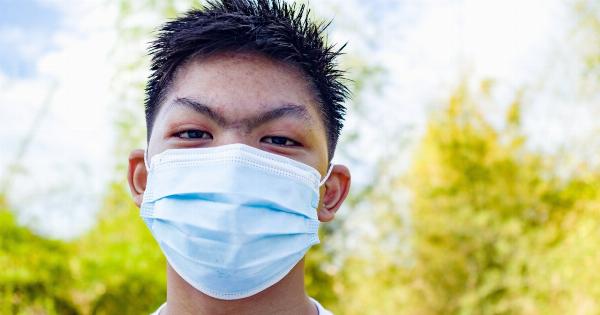In today’s modern world, parents face a multitude of concerns when it comes to the health and well-being of their children.
From rising rates of obesity to the impact of technology on mental health, there are numerous issues that can pose risks to the physical and emotional development of young individuals.
The Sedentary Lifestyle Epidemic
One major concern that has been gaining increasing attention is the sedentary lifestyle epidemic.
The rise of technology, especially smartphones, tablets, and video games, has led to a significant decrease in physical activity among children and adolescents. Kids are spending more time indoors glued to screens, leading to a sedentary lifestyle that can have severe consequences for their health.
Physical activity is not only crucial for maintaining healthy body weight, but it also plays a pivotal role in the development of strong muscles, bones, and cardiovascular health.
The lack of physical activity can lead to a range of problems such as obesity, poor posture, weakness, and even an increased risk of chronic diseases like diabetes and cardiovascular diseases later in life.
Unhealthy Eating Habits
Another significant danger to our kids’ health is the prevalence of unhealthy eating habits. Fast food chains and processed snack options have become increasingly common, often replacing nutritious meals at home.
These foods are typically high in unhealthy fats, sugar, and sodium while lacking vital nutrients, such as vitamins, minerals, and fiber.
Poor nutrition can have far-reaching consequences, including stunted growth, weakened immune systems, and compromised cognitive function.
Additionally, unhealthy eating habits can contribute to the development of chronic diseases such as type 2 diabetes and heart disease. It is essential for parents to prioritize providing their children with a well-balanced diet composed of fresh fruits and vegetables, whole grains, lean proteins, and limited processed foods and sugary drinks.
The Psychological Impact of Social Media
With the rapid development of social media platforms and the increasing accessibility of smartphones, another alarming danger to our kids’ health has emerged – the psychological impact of social media.
Many children and adolescents are now spending excessive amounts of time on platforms like Instagram, Facebook, and Snapchat, which can lead to various mental health issues.
The constant exposure to carefully curated and often unrealistic representations of other people’s lives can contribute to feelings of social comparison, low self-esteem, and even depression and anxiety.
This is especially true when kids are constantly bombarded with images of seemingly perfect bodies, luxurious lifestyles, and unattainable standards of beauty.
Furthermore, cyberbullying has become a prevalent issue, with individuals using social media platforms to harm and harass others.
This can have a severely detrimental effect on the mental well-being of children and adolescents, leading to depression, suicidal thoughts, and a decline in academic performance. It is crucial for parents to educate their children about responsible social media use and ensure open lines of communication about any negative experiences.
Inadequate Sleep Patterns
In today’s fast-paced world, the importance of a good night’s sleep is often underestimated. However, inadequate sleep patterns are a significant danger to our kids’ health.
Many children and teenagers are not getting the recommended amount of sleep each night, contributing to a range of physical and mental health issues.
Sleep deprivation can negatively impact cognitive function, attention span, and memory, making it difficult for students to concentrate and excel academically.
Additionally, lack of sleep weakens the immune system, increasing susceptibility to illnesses. Chronic sleep deprivation has also been linked to an increased risk of mental health disorders, such as anxiety and depression.
Parents should prioritize establishing consistent sleep routines for their children, ensuring they get the recommended amount of sleep for their age group.
This includes setting regular bedtimes, creating a calm and comfortable sleep environment, and avoiding stimulating activities before bedtime.
Exposure to Environmental Toxins
Our children’s health is also endangered by the increasing exposure to environmental toxins. Pesticides, air pollution, lead, and various chemicals found in everyday products can have detrimental effects on their developing bodies.
Exposure to these toxins has been linked to a range of health problems, including respiratory issues, neurodevelopmental disorders, and even certain types of cancer.
It is crucial for parents to be proactive in minimizing their children’s exposure to these toxins by ensuring clean indoor air quality, using non-toxic household products, and providing a nutritious diet rich in antioxidants to support the body’s natural detoxification system.
Misuse of Prescription Medication
While prescription medication can be life-saving in certain situations, the misuse of these drugs has become a growing concern when it comes to children’s health.
Many teenagers are turning to prescription drugs as a means of self-medication or recreational use, without understanding the potential dangers and consequences.
Prescription drug misuse can lead to addiction, organ damage, respiratory depression, and even fatal overdoses.
It is imperative for parents to educate their children about the risks associated with these medications and ensure they are stored securely and only used as directed by healthcare professionals.
Insufficient Physical and Emotional Safety
Finally, the overall physical and emotional safety of our children plays a crucial role in their overall well-being.
Unfortunately, the world can be a dangerous place, and it is essential for parents and caregivers to create a safe and nurturing environment for their children.
Physical safety includes providing appropriate supervision, childproofing the home, and teaching children about potential dangers.
Emotional safety involves creating a supportive and loving atmosphere, promoting open communication, and addressing any signs of emotional or psychological distress promptly.
Conclusion
The most alarming danger to our kids’ health encompasses a variety of factors, each with its own potential consequences.
From the sedentary lifestyle epidemic to unhealthy eating habits, psychological impacts of social media, inadequate sleep patterns, exposure to environmental toxins, misuse of prescription medication, and overall physical and emotional safety, the threats are numerous.
However, as parents and caregivers, we have the power to make a difference.
By prioritizing physical activity, providing a nutritious diet, monitoring and guiding social media use, promoting healthy sleep habits, minimizing exposure to toxins, educating about the dangers of prescription drugs, and creating a safe and nurturing environment, we can help protect our children’s health and ensure they grow up to be happy, thriving individuals.






























